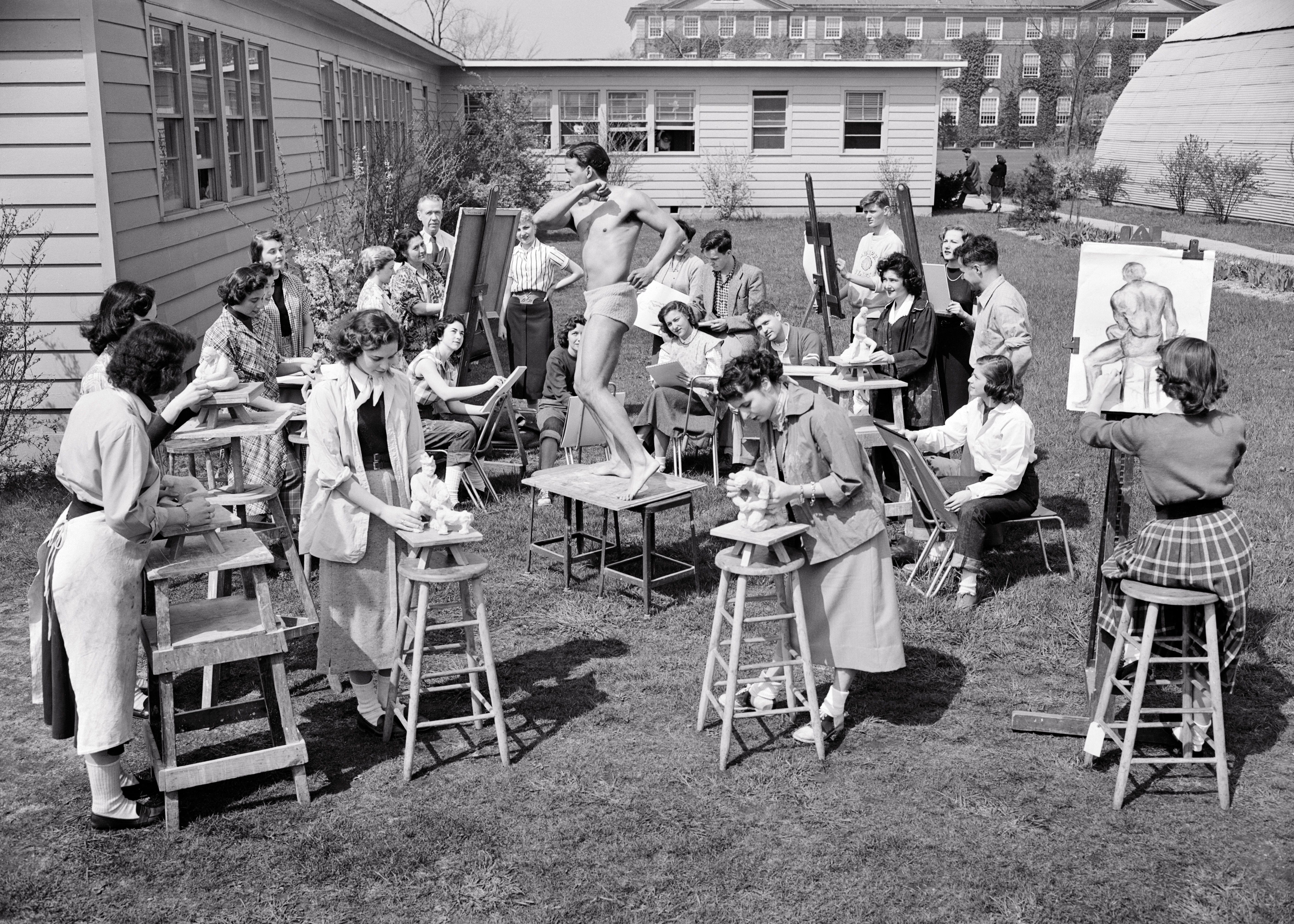Why it’s imperative that schoolchildren have access to art and design classes
The UK’s creative industries are worth £124.6 billion, but suitable classes are being stripped from the curriculum. Tristram Hunt, director of the V&A, outlines what the Museum is planning to do about it.


The Manchester Tiara (below) is among the most sublime achievements of the House of Cartier. Made in Paris, in 1903, to the order of Consuelo, Dowager Duchess of Manchester, this triumph of graduated flaming hearts and C scrolls — made up of more than 1,000 brilliant-cut and more than 400 rose-cut diamonds — was inspired by a vision of pre-revolutionary France.
Louis Cartier had encouraged his designers to sketch 18th-century ironwork and architectural ornament in Paris to create a true work of art for the most beautiful and celebrated ‘dollar princess’ of the Edwardian era.

The tiara sits alongside numerous other treasures to be put on show this spring in the V&A Museum’s new blockbuster exhibition, Cartier. At the heart of the French maison’s story lies an unwavering commitment to artistry and craftsmanship, which is why, for us, this exhibition is about much more than a celebration of bling — although the bling is fairly breathtaking.
Instead, the programme speaks to the V&A’s cardinal missions to encourage the take up of art and design among schoolchildren and students. For we are at a truly critical point in our national education system, where the provision of creative learning and the nurturing of craft skill is in need of urgent attention.
This matters not only for the joy the study of art and design can bring to the young soul, but for practical, economic reasons, too. Jean-Baptiste Colbert, Louis XIV’s Minister of Finance, once famously declared that ‘Fashion is to France what the gold mines of Peru are to Spain’.
Creativity is becoming increasingly vital for employability and is now recognised as one of the top three ‘future skills’ needed to flourish in a fast-changing, technological world
For the UK, it now forms an equally essential part of our prosperity. The latest figures available reveal that the economic contribution of the UK creative industries grew by 6.8% in 2022 to reach £124.6 billion. As part of that, British luxury — including fashion and jewellery brands dependent on creative skills — grew by nearly 70% between 2018 and 2022.
Creativity is becoming increasingly vital for employability and is now recognised as one of the top three ‘future skills’ needed to flourish in a fast-changing, technological world.
Exquisite houses, the beauty of Nature, and how to get the most from your life, straight to your inbox.
Yet, at the very moment when, in the face of the Fourth Industrial Revolution and the transformative impact of artificial intelligence (AI), we should be investing in human skills and creativity, the British seem to be stripping it out of the school curriculum. A perfect storm of school-accountability measures (the so-called English Baccalaureate, or EBacc, system of academic league tables) and a shocking fall in per-pupil funding has led to a highly disturbing drop in the number of students taking art-subject GCSEs. Budget cuts affect access to materials, workshops, trips and other important aspects of a creative education.
The number of combined entries to all Arts subjects has fallen by 42% since 2010, the year the EBacc was introduced. It is even worse in Design and Technology, where statistics for 2008-2022 show that the number of students taking design and technology at GCSE and A-level has dropped radically, with 71% fewer GCSE candidates. In 2023, the share of Arts subjects taken at GCSE hit a new low of 7.1% of all exam entries; at A-level, they fell to 10.86%, according to the Campaign for the Arts.
Unsurprisingly, since 2011, state-funded schools have seen a significant decline in the number of art and design teachers. We are at risk of entering a doom-loop of falling rolls, retiring teachers and an uninspiring curriculum. What is more, there is a terrible social injustice in this provision, as the data reveals that independent schools have, in contrast, kept up their investment in art studios, design workshops, theatres and orchestras.
The V&A is stepping into this void. Born of the Design School movement of the 1840s when British manufacturing feared it was falling behind Continental competitors, the museum began with an educational mission, providing a place of inspiration for creative practitioners.
Our founder, Prince Albert, wanted to establish us as ‘the central storehouse or treasury of Science and Art for the use of the whole Kingdom’. Soon, our collection of South Asian textiles, Persian pottery, Chinese ceramics, Renaissance sculpture and English medieval embroidery sparked the imagination of Britain’s greatest designers. ‘Perhaps I have used it as much as any man living,’ wrote William Morris as he and Owen Jones revelled in the Islamic artefacts on display. As the late Sir Anthony Caro, one of the world’s great sculptors, declared: ‘We artists go to the V&A for sustenance.’
For, as art and design continues to suffer in mainstream schooling, the V&A is determined to use every tool we have to fulfil our historic responsibility to art education
In recent years, the museum has sought to extend that educational mission with programmes such as V&A Innovate, which invites students in Years 7, 8 and 9 to pitch ideas in response to real-world design challenges, and our DesignLab Nation workshops, which target the crucial GCSE years: run in partnership with regional museums and local industries, they are partly about helping young people discover the creative heritage on their doorsteps — whether that’s boat building in Plymouth, glass manufacturing in Sunderland or ceramics in Stoke-on-Trent. Exhibitions such as Cartier, in its glittering display of craft excellence, will no doubt spark the imagination of a new generation of makers and artists. For, as art and design continues to suffer in mainstream schooling, the V&A is determined to use every tool we have to fulfil our historic responsibility to art education, starting off with all the glamour of the Manchester tiara.
However, we all have a role to play. As parents or governors of schools, our vocal commitment to the teaching of art and design — ensuring its place in the curriculum; proper funding for Arts material; a vibrant programme of extra-curricular trips — is essential. It also means supporting (as patrons and users) the broader eco-system of creativity: from the regional museum to the art-college show to the craft and design fair.
One of the most damaging trends of recent years has been the declining capacity of local-authority museums and galleries. Important civic centres such as Nottingham, Birmingham, Derby, and Leicester have seen cultural provision crumble at an alarming rate. These great museums hold historic collections able to inspire new makers and designers. Again, it is up to us, as citizens and ratepayers, to ensure that political leaders appreciate the value we place upon these.
The tragedy of this situation is that the UK is a world leader in the creative industries. From publishing to music to theatre, film to video games and product design, we display a remarkable capacity to produce outstanding and popular works of global significance. It is a sector we should be proudly championing, starting, crucially, by nurturing the next generation of talent.
‘Cartier’ is at the V&A Museum, South Kensington, London SW7, from 12th April, 2025.
Tristram Hunt is a British historian, broadcast journalist and former politician who has been Director of the Victoria & Albert Museum since 2017.
